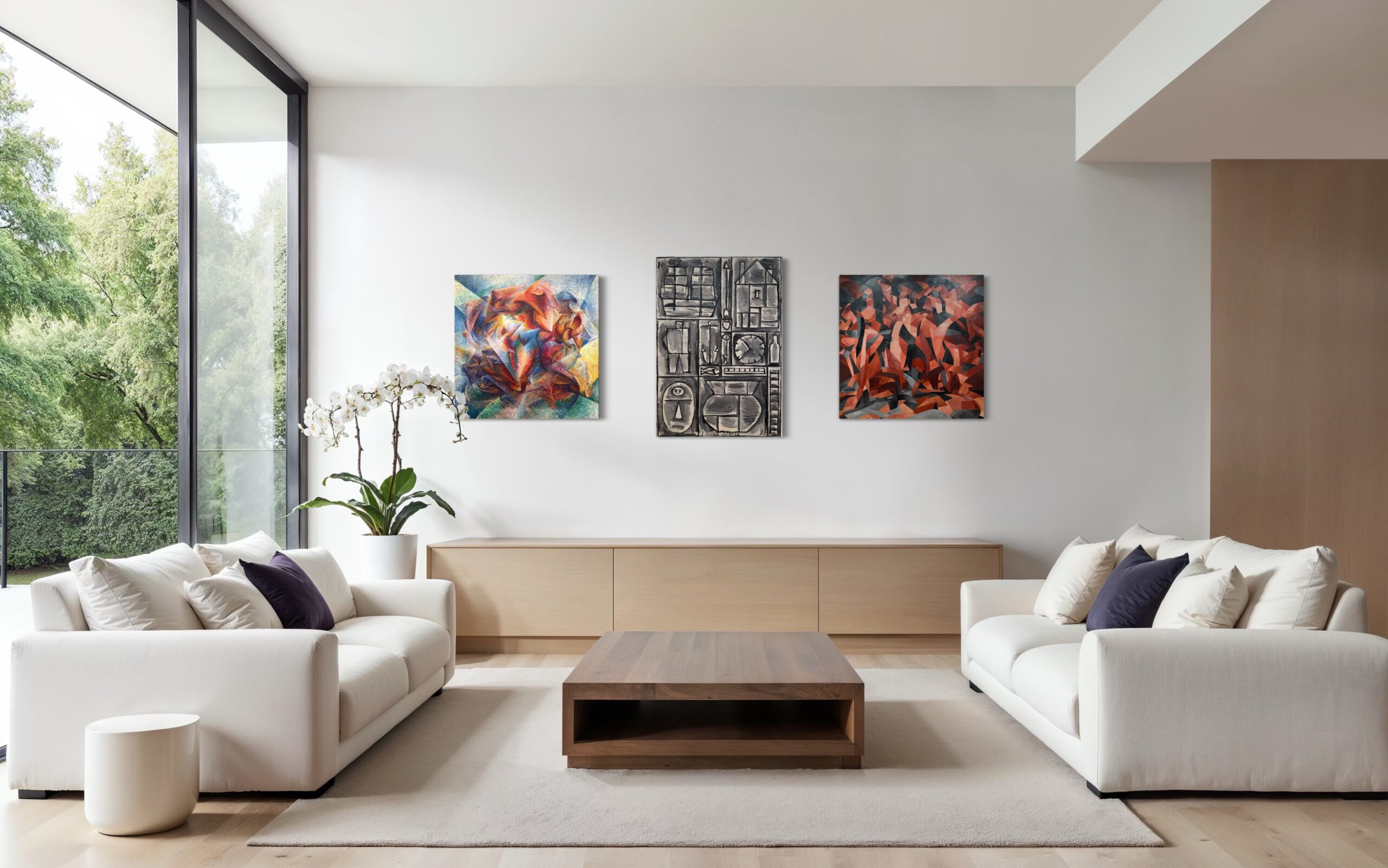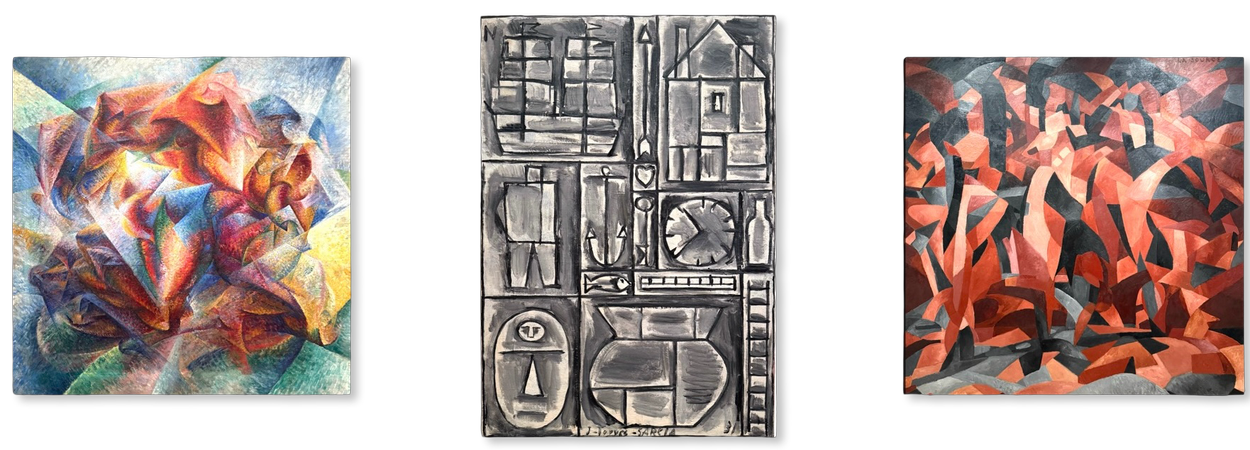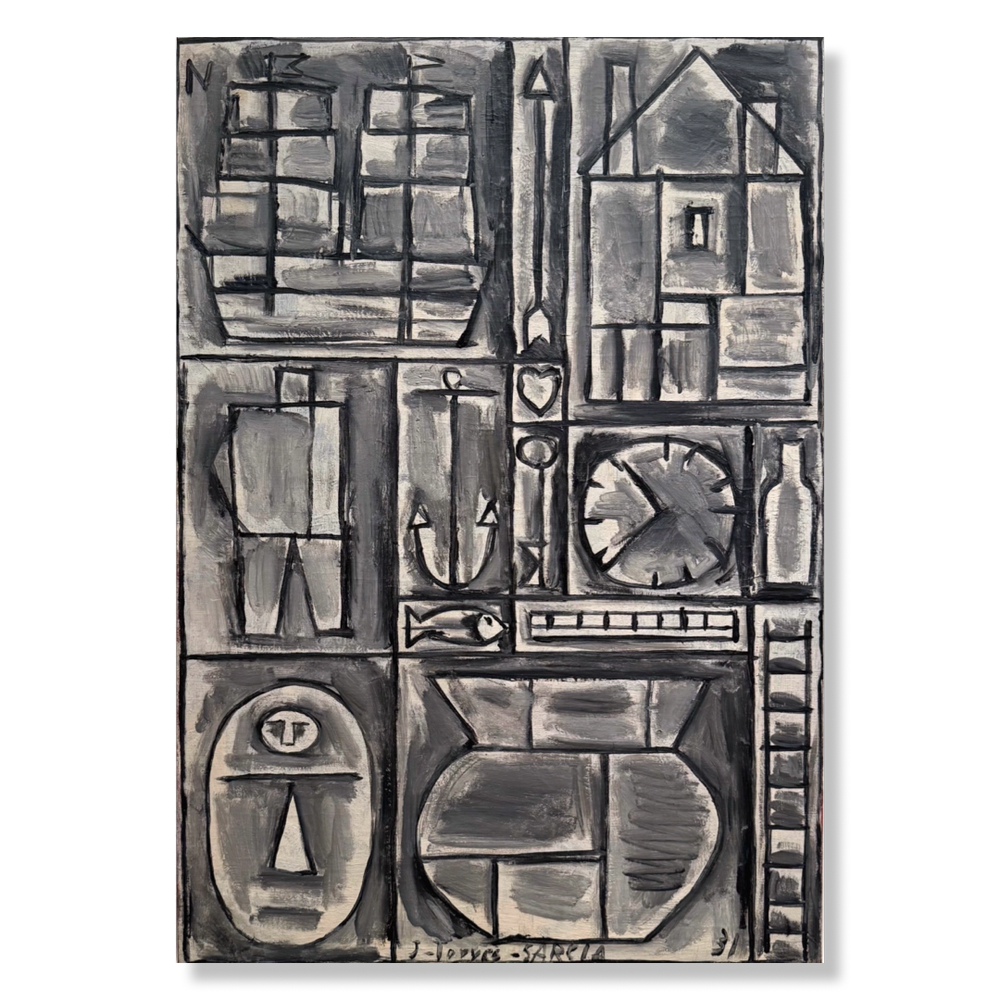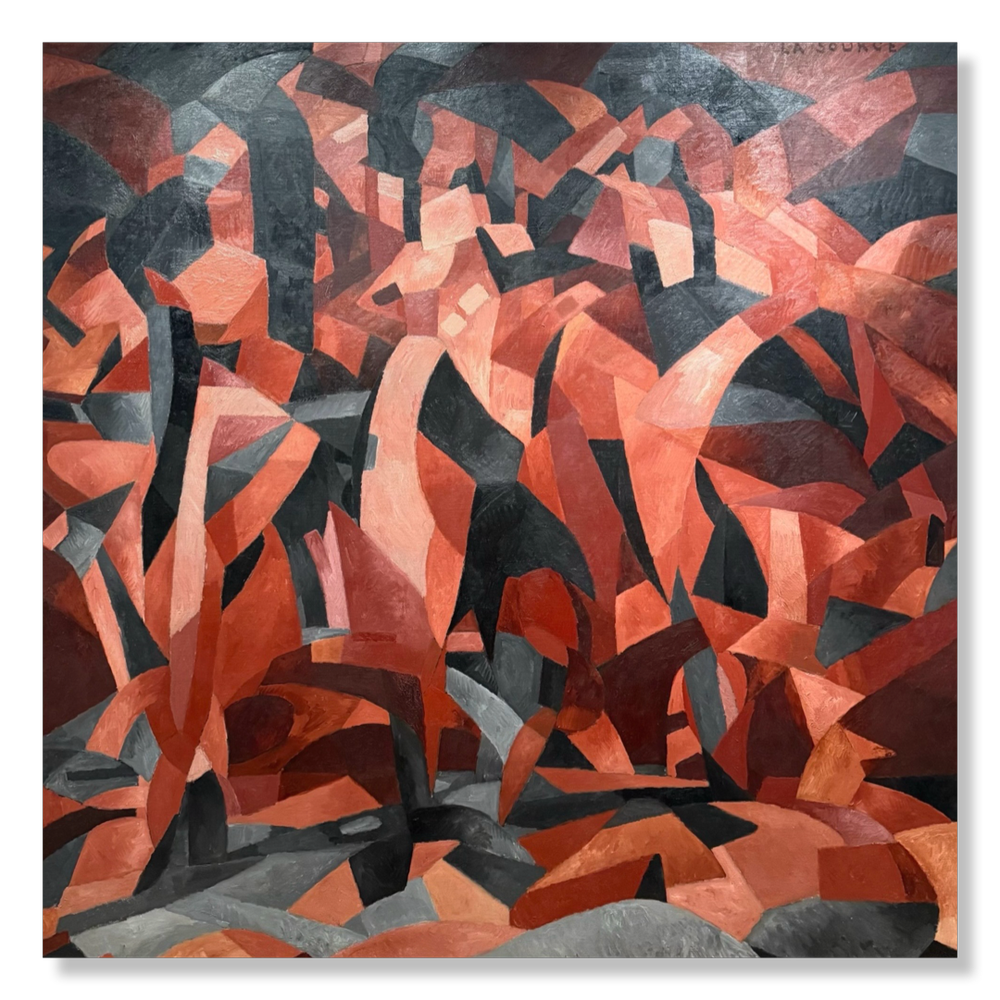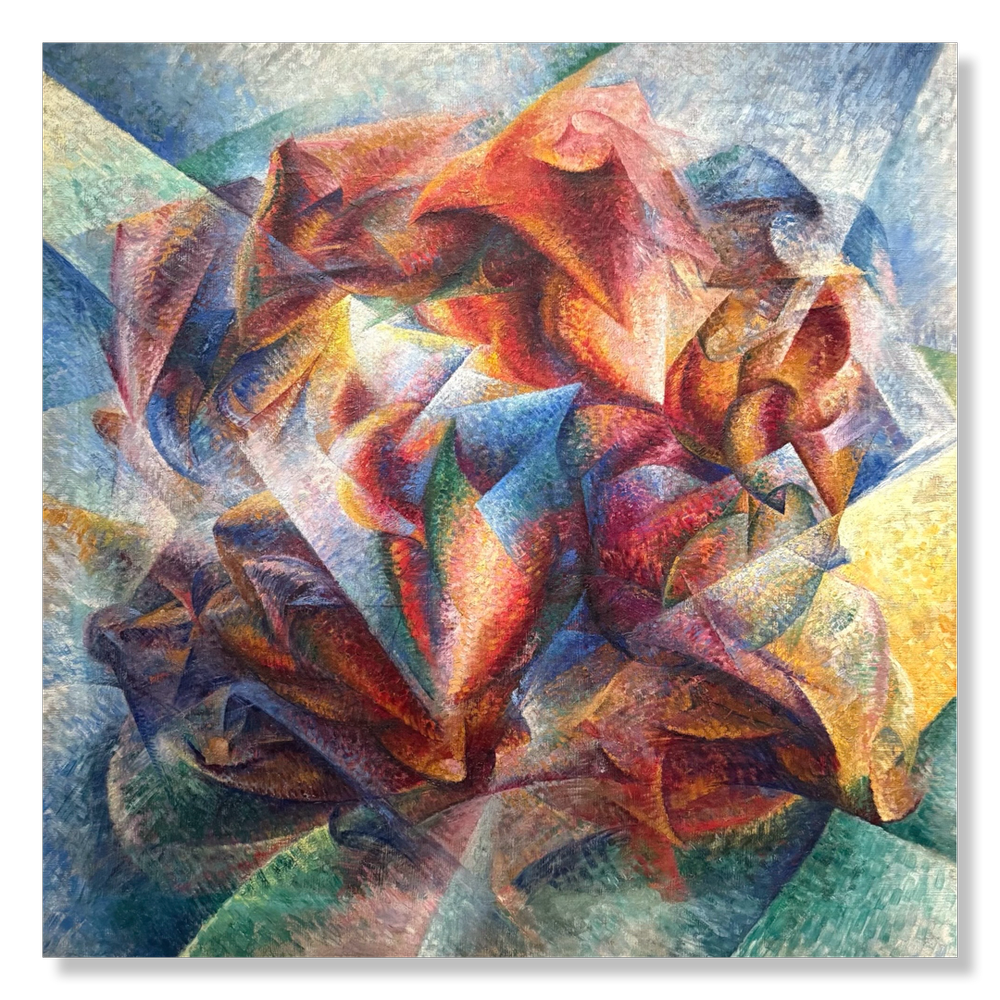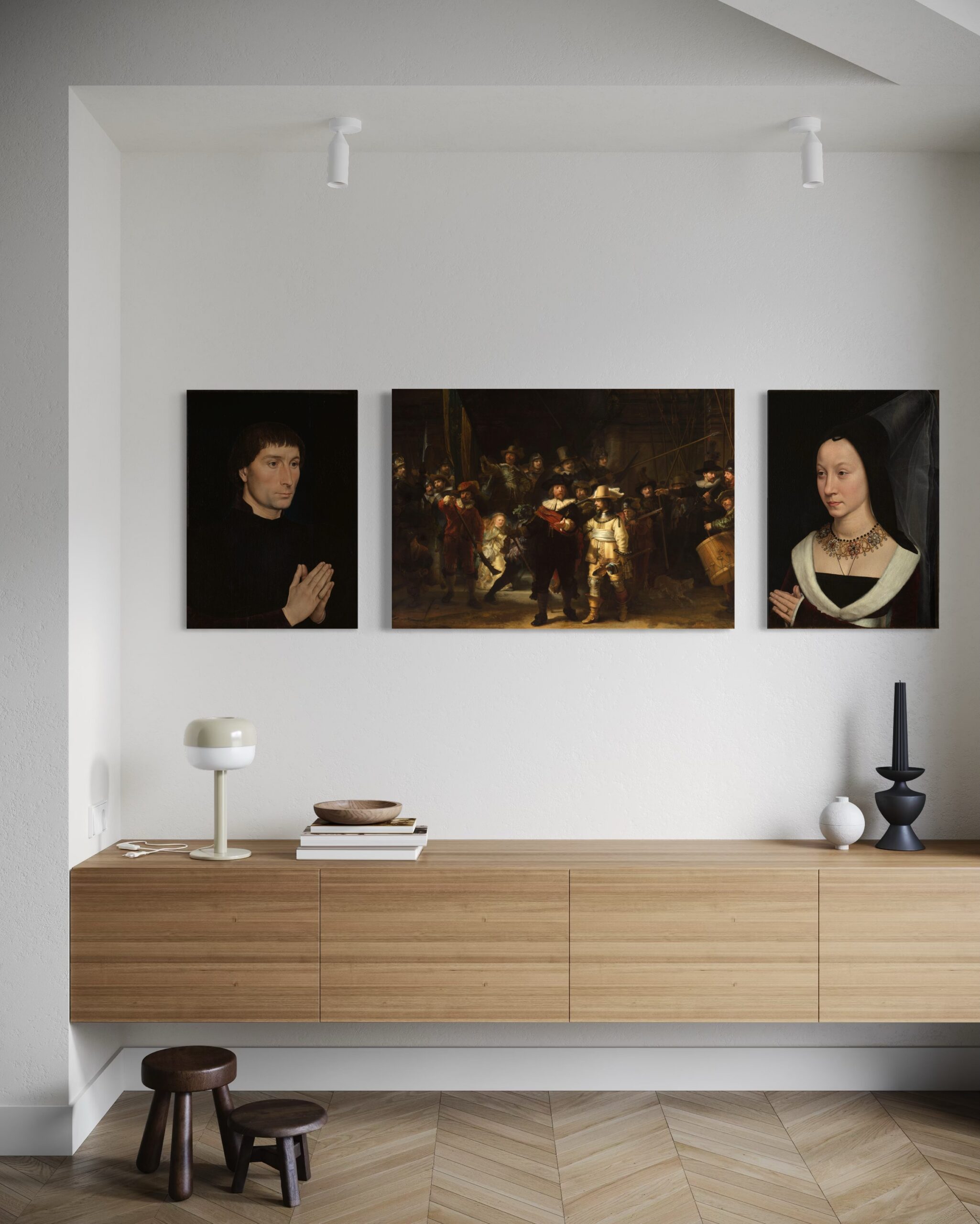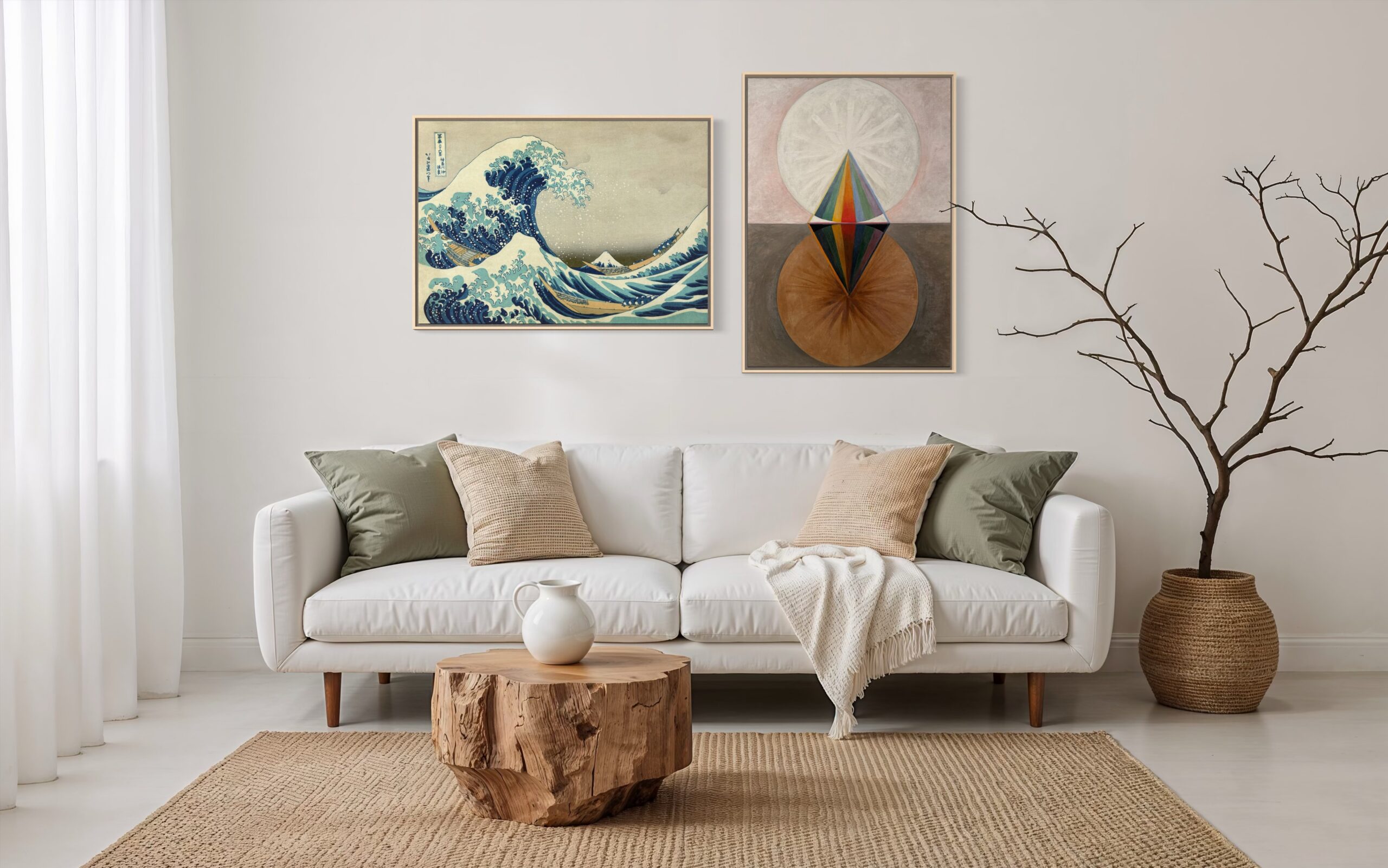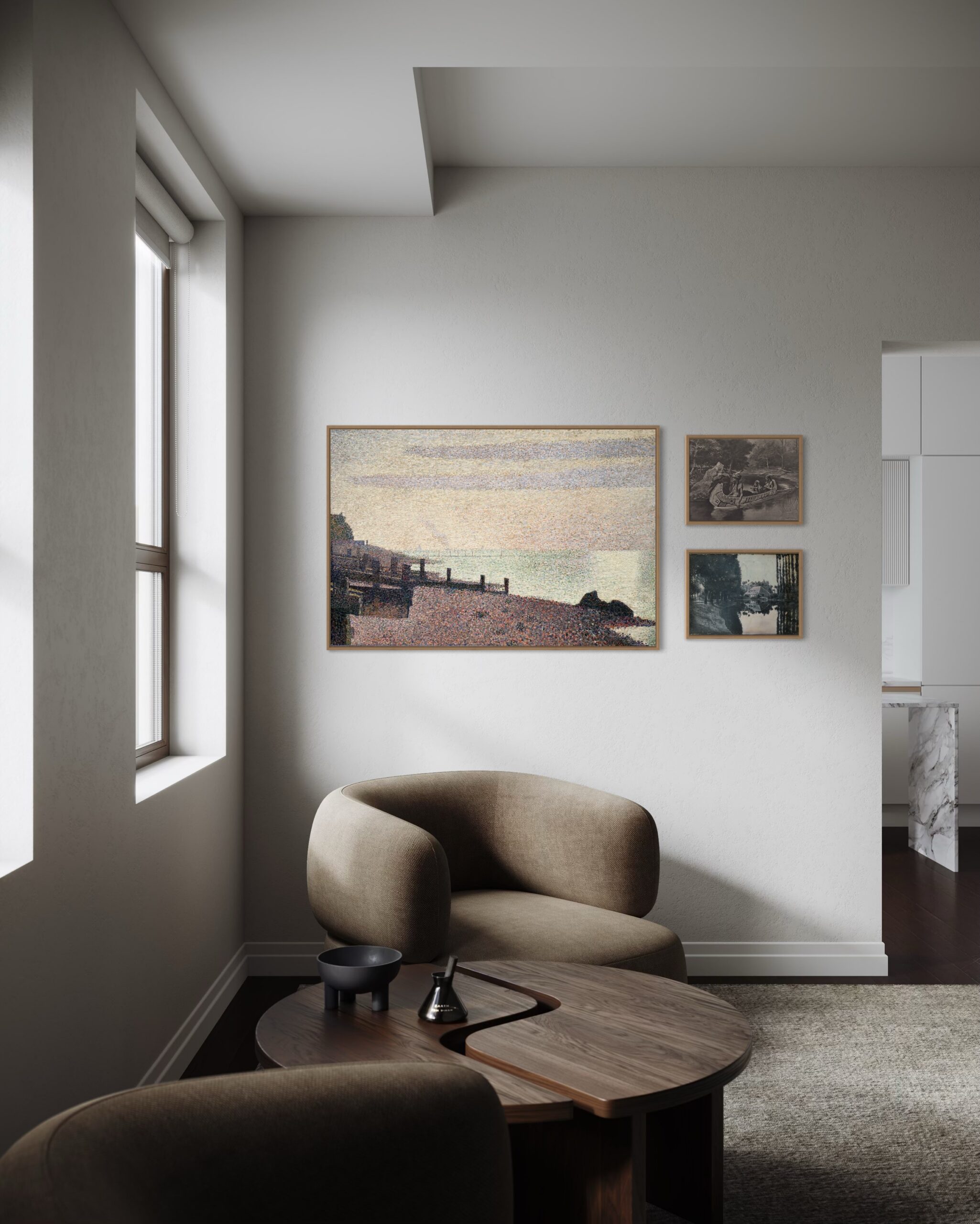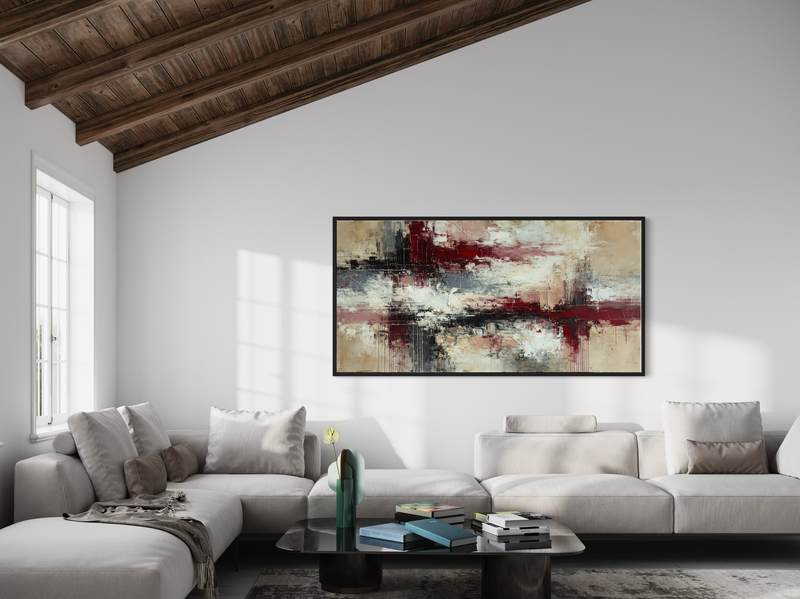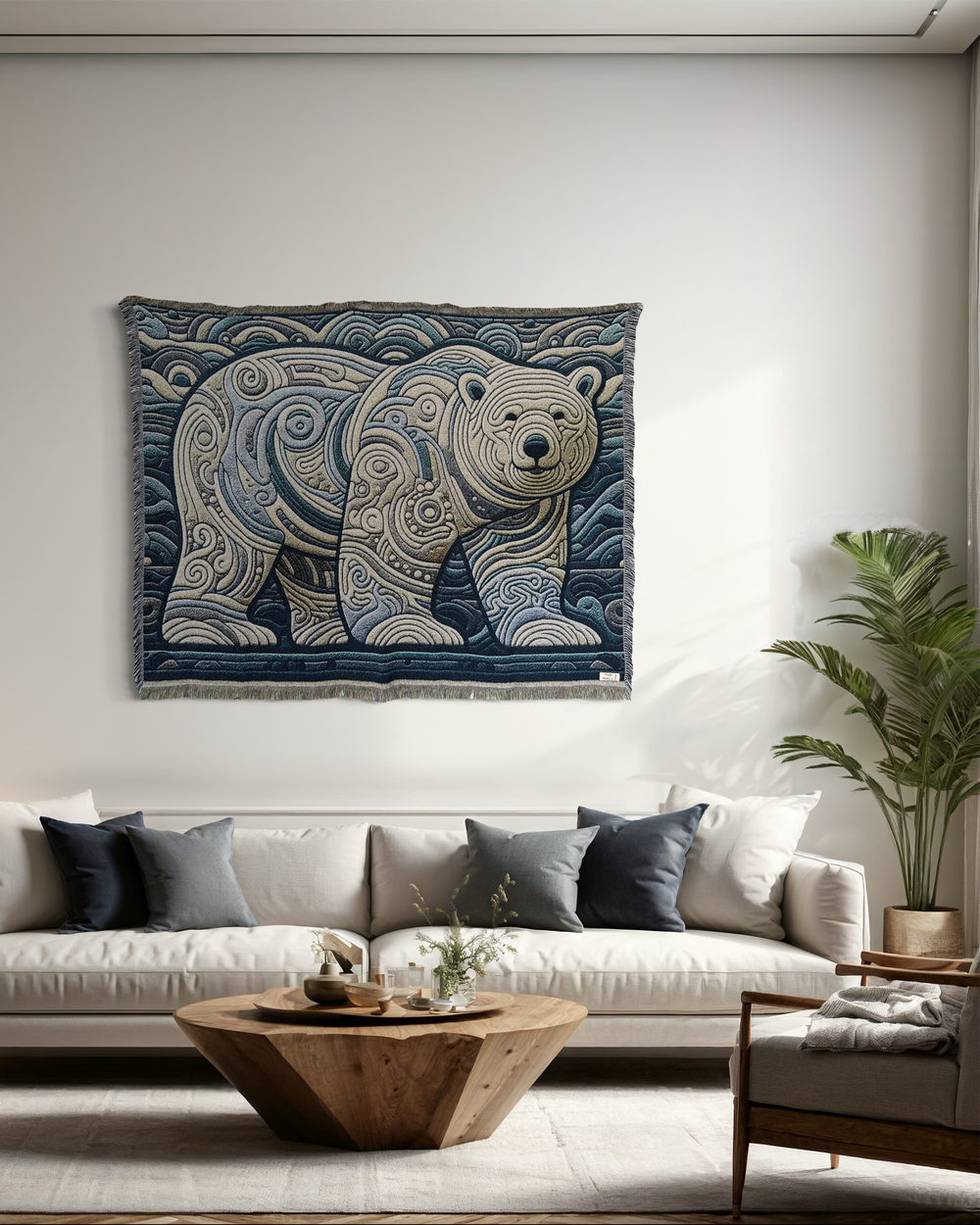Description
Urban Geometry brings together three modernist positions where the city becomes the engine of form, rhythm and motion. Francis Picabia opens with The Spring (1912) – a mechanical-organic visual language in which gears, shafts and curves merge into a poetic machine. Umberto Boccioni follows with Dynamism of a Soccer Player (1913), where Futurist speed and energy break the figure into diagonals and vectors. Joaquín Torres-García ties it together in Composition (1931): a constructive grid where symbols and architecture form a timeless city map.
Together the works stage a dialogue between machine and body, movement and order, modernity and myth – urban aesthetics presented in a clean, contemporary hanging.
Product information
• Canvas print
• Stretched on wooden frame (38 mm) – ready to hang
• Delivered ready to hang
• Iconic works by Francis Picabia, Umberto Boccioni and Joaquín Torres-García
• Sizes:
– Francis Picabia, The Spring (1912) – 80×80 cm
– Umberto Boccioni, Dynamism of a Soccer Player (1913) – 80×80 cm
– Joaquín Torres-García, Composition (1931) – 70×100 cm
Credits
• Francis Picabia, The Spring (1912) – Public Domain.
• Umberto Boccioni, Dynamism of a Soccer Player (1913) – Public Domain.
• Joaquín Torres-García, Composition (1931) – Public Domain.
Cropping
Cropped versions of the originals. Composition adapted to the format without altering the works’ expression.
Finish
Printed on canvas and stretched on stretcher bars for a clean, gallery look. Urban modernism meets minimalist now – a visual statement with clarity and character.
Requests & custom sizes
Looking for other sizes or frames? We’re happy to help. Contact contact@kunstlageret.com.
About the artists
Francis Picabia (1879–1953) – French modernist (Cubism, Dada); known for “machine portraits.”
Umberto Boccioni (1882–1916) – Italian Futurist; aesthetics of speed and dynamism.
Joaquín Torres-García (1874–1949) – Uruguayan-Catalan artist; constructive grids and symbols.

